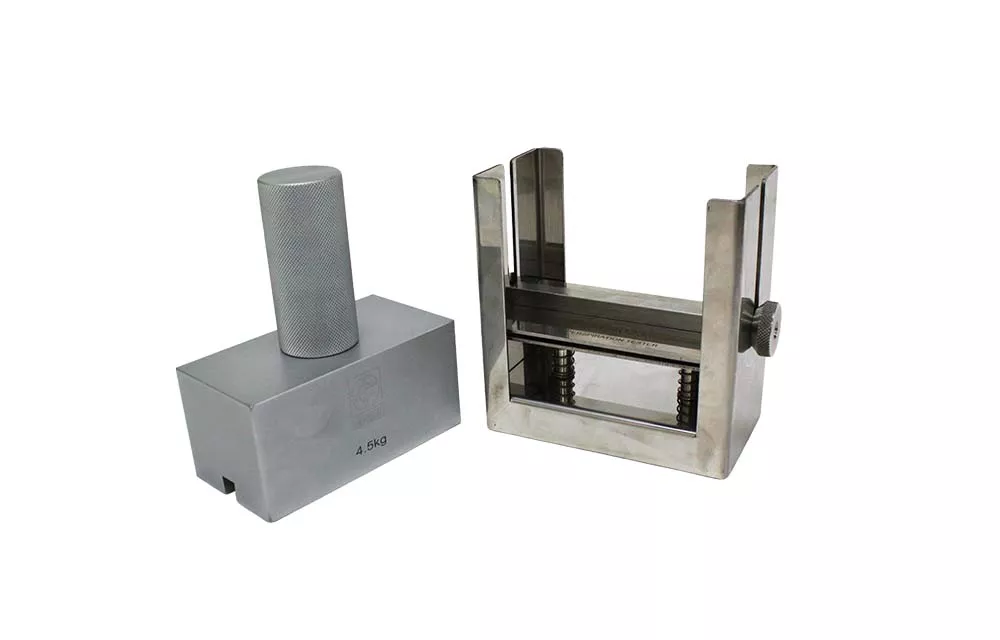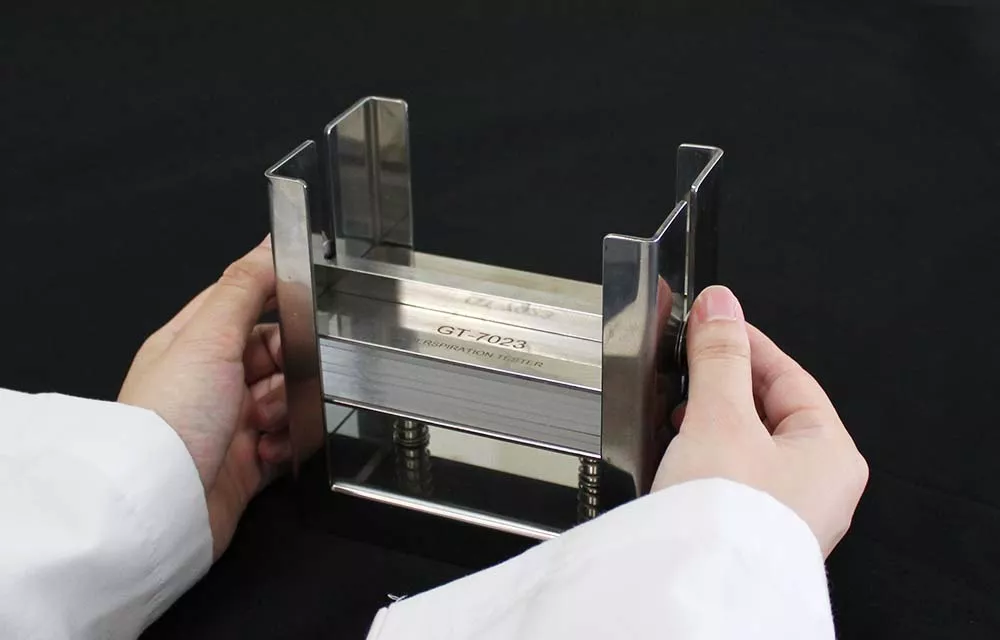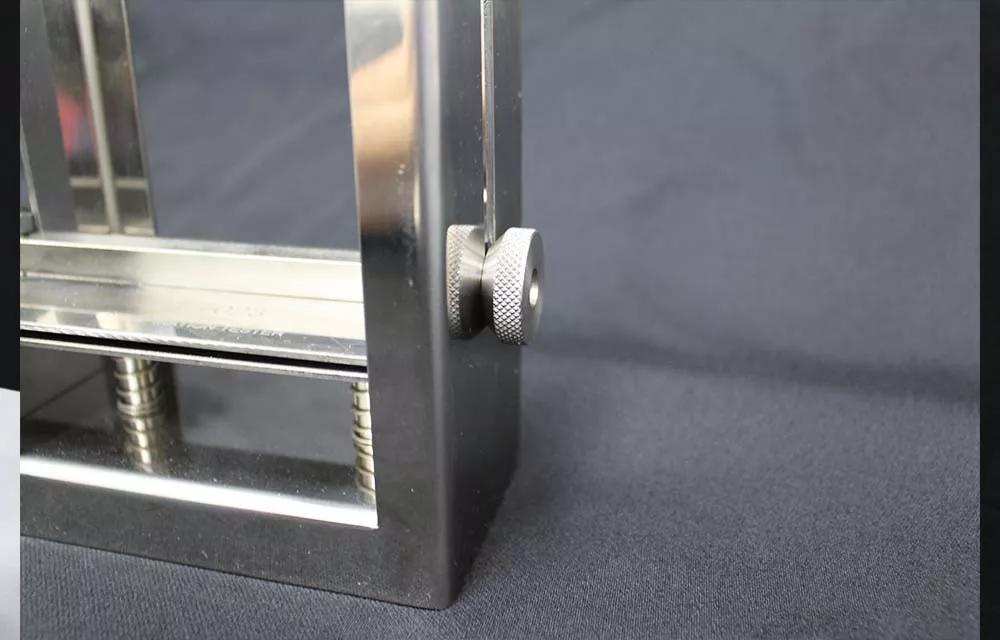







- The GT-7023 (JIS) is designed to determine the color fastness of textile and leather to human perspiration.
- During a perspiration test, a composite specimen treated with artifical perspiration in the perspiratiion tester is subjected to specific pressure and temperature conditions for a specified period of time. The degree of color change is then assessed by comparing it with a gray scale.
-
Standards
- JIS-L0846
- JIS-L0847
- JIS-L0848
- JIS-L0854
Principle
Specimen in contact with adjacent fabrics treated with artifical perspiration are tested between two prescribed flat plates under specified pressure and temperature. After a given period of time, the dried composite specimen is assessed using a gray scale for fading and staining evaluation.
Applications:
The perspiration tester is widely used to evaluate the color fastness of textile and leather to perspiration.
Fading:
Degree of color loss that can occur during manufacturing, testing, and storage processes.
Staining:
Degree of color transfer that can occur to adjacent materials when interacting with abrasion.
Artifical perspiration:
Utilizing different types of artifical perspiration to simulate the effects on materials.
Realistic simulation:
Simulates everyday use scenarios involving stress and moisture from constant contact with skin.
Standardized assessment:
Applies standardized test methods to assess the degree of fading and compares the sample with gray scale to ensure the resistance level to perspiration.
Standard conformity:
Ensures that products meet industry standards and satisfy quality expectations in the market.
-

Authentic simulation
Effectively simulates and replicates realistic humid conditions including perspiration, pressure, and time.

Desktop design
The perspiration tester is easy to carry and install. With its compact design, it is well-suited for use with environmental chamber.

Sturdy structure
Constructed with rigid frames and durable components to ensure long service life.
-
 左右滑動看表格
左右滑動看表格
*Product design and specifications are subject to change without notice.Standard Test specimen Acrylic plate Load JIS (A) 60×60 mm 115×63×1.5~3mm(D) 4.6 kg JIS (B) 40×100 mm 115×63×1.5~3mm(D) 5.1 kg Dimensions (W×D×H) 142x74x244 mm Weight 8 kg
-
Details
Standards
- JIS-L0846
- JIS-L0847
- JIS-L0848
- JIS-L0854
Principle
Specimen in contact with adjacent fabrics treated with artifical perspiration are tested between two prescribed flat plates under specified pressure and temperature. After a given period of time, the dried composite specimen is assessed using a gray scale for fading and staining evaluation.
Applications:
The perspiration tester is widely used to evaluate the color fastness of textile and leather to perspiration.
Fading:
Degree of color loss that can occur during manufacturing, testing, and storage processes.
Staining:
Degree of color transfer that can occur to adjacent materials when interacting with abrasion.
Artifical perspiration:
Utilizing different types of artifical perspiration to simulate the effects on materials.
Realistic simulation:
Simulates everyday use scenarios involving stress and moisture from constant contact with skin.
Standardized assessment:
Applies standardized test methods to assess the degree of fading and compares the sample with gray scale to ensure the resistance level to perspiration.
Standard conformity:
Ensures that products meet industry standards and satisfy quality expectations in the market.
-
Features

Authentic simulation
Effectively simulates and replicates realistic humid conditions including perspiration, pressure, and time.

Desktop design
The perspiration tester is easy to carry and install. With its compact design, it is well-suited for use with environmental chamber.

Sturdy structure
Constructed with rigid frames and durable components to ensure long service life.
-
Specifications
 左右滑動看表格
左右滑動看表格
*Product design and specifications are subject to change without notice.Standard Test specimen Acrylic plate Load JIS (A) 60×60 mm 115×63×1.5~3mm(D) 4.6 kg JIS (B) 40×100 mm 115×63×1.5~3mm(D) 5.1 kg Dimensions (W×D×H) 142x74x244 mm Weight 8 kg

